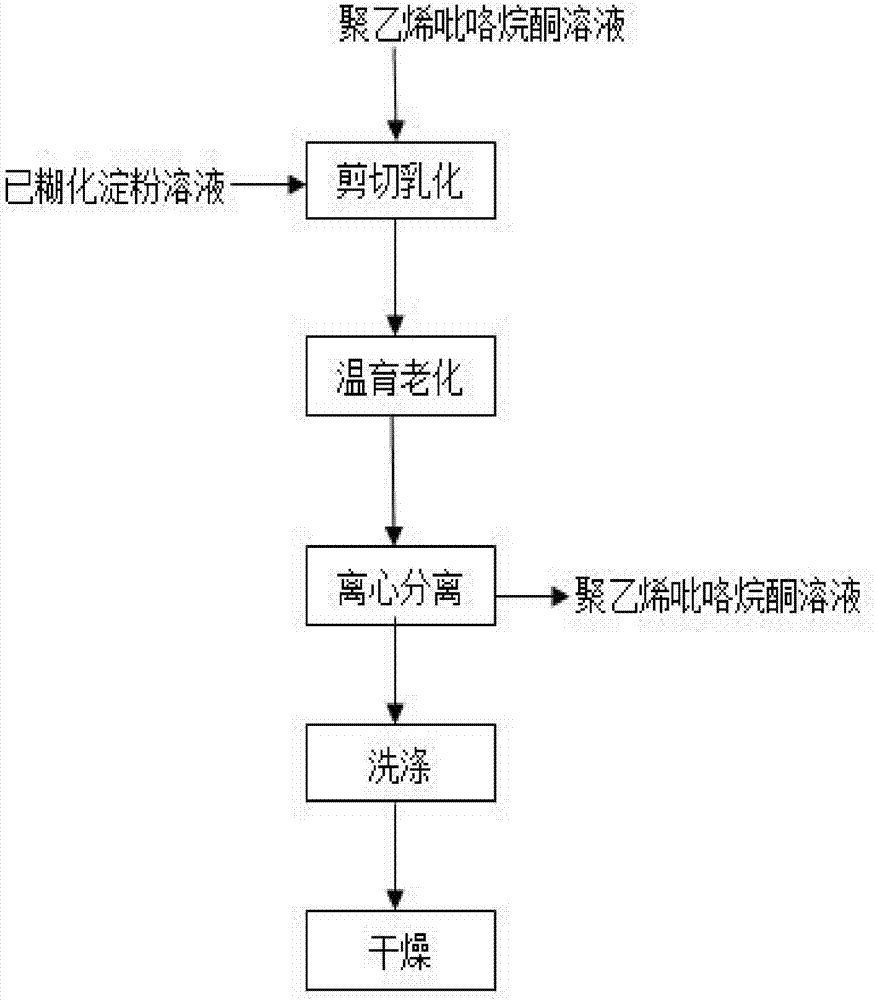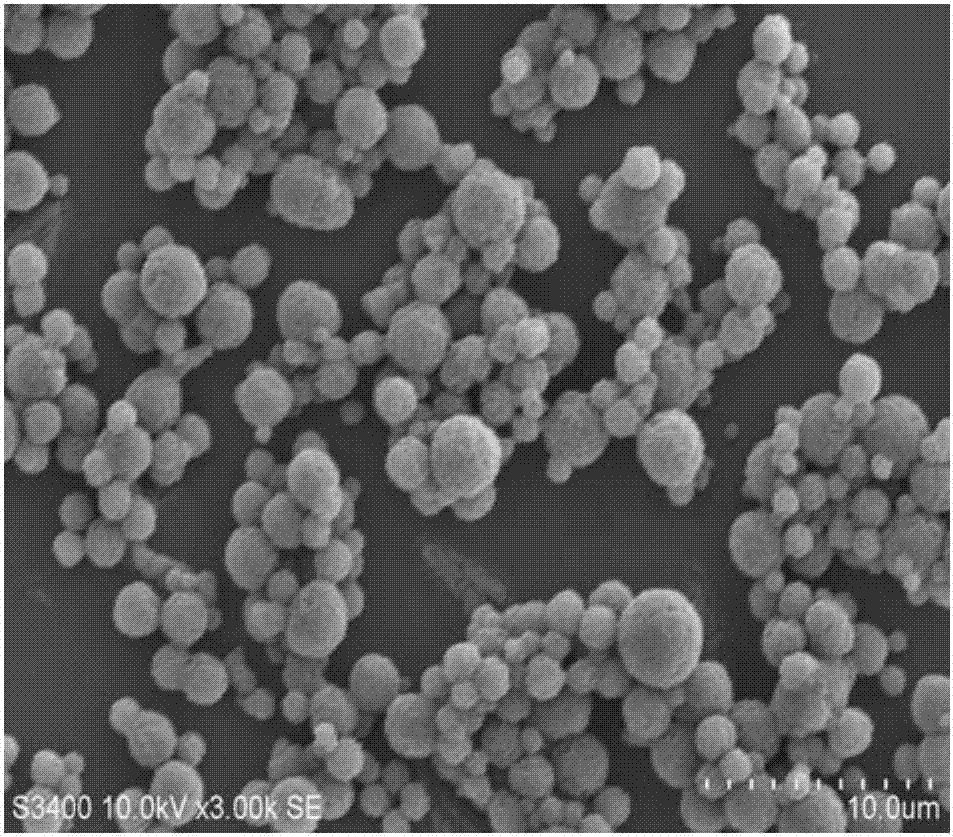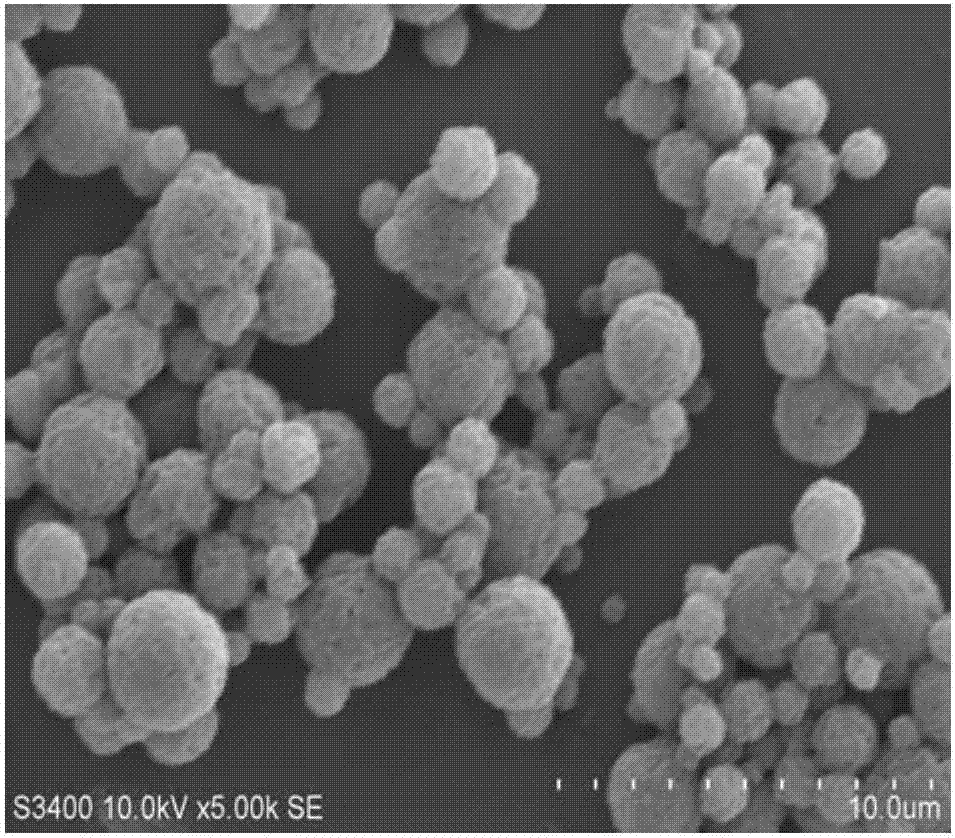Preparation method of starch microspheres with small particle sizes
A technology of starch microspheres and small particle size, which is applied in the field of preparation of small particle size starch microspheres, and can solve problems such as poor product quality, no small particle size starch microspheres, uneven distribution, etc.
- Summary
- Abstract
- Description
- Claims
- Application Information
AI Technical Summary
Problems solved by technology
Method used
Image
Examples
Embodiment 1
[0033] A preparation method of small-diameter starch microspheres includes the following steps:
[0034] (1) Preparation of starch solution: The modified starch obtained after acid treatment of soluble potato starch is formulated into a suspension with a mass fraction of 17.5%, and heated in a boiling water bath to gelatinize for 15 minutes to obtain a starch solution;
[0035] (2) Preparation of polyvinylpyrrolidone solution: polyvinylpyrrolidone with a weight average molecular weight of 24000 and deionized water are prepared into a polyvinylpyrrolidone solution with a mass fraction of 38%;
[0036] (3) Emulsion emulsification: In terms of parts by volume, pour 1 part of starch solution that has been cooled to 55°C into 10 parts of polyvinylpyrrolidone solution at 55°C, and then use a high-shear emulsifier at a speed of 6000 rpm Emulsify for 30 seconds to obtain an aqueous two-phase emulsion;
[0037] (4) Regenerate and solidify into balls and separate and wash: Place the two-phase e...
Embodiment 2
[0043] A preparation method of small-diameter starch microspheres includes the following steps:
[0044] (1) Preparation of starch solution: The modified starch obtained after acid treatment of soluble corn starch is formulated into a suspension with a mass fraction of 17.5%, and heated in a boiling water bath to gelatinize for 15 minutes to obtain a starch solution;
[0045] (2) Preparation of polyvinylpyrrolidone solution: prepare polyvinylpyrrolidone with a weight average molecular weight of 10,000 and deionized water into a polyvinylpyrrolidone solution with a mass fraction of 45%;
[0046] (3) Emulsion emulsification: In terms of parts by volume, pour 1 part of starch solution that has been cooled to 55°C into 10 parts of polyvinylpyrrolidone solution at 55°C, and then use a high-shear emulsifier at a speed of 8000 rpm Emulsify for 10 seconds to obtain an aqueous two-phase emulsion;
[0047] (4) Regenerate and solidify into balls and separate and wash: Place the two-phase emulsio...
Embodiment 3
[0053] A preparation method of small-diameter starch microspheres includes the following steps:
[0054] (1) Preparation of starch solution: The modified starch obtained after acid treatment of soluble tapioca starch is formulated into a suspension with a mass fraction of 10%, and heated in a boiling water bath to gelatinize for 15 minutes to obtain a starch solution;
[0055] (2) Preparation of polyvinylpyrrolidone solution: polyvinylpyrrolidone with a weight average molecular weight of 24000 and deionized water are prepared into a polyvinylpyrrolidone solution with a mass fraction of 35%;
[0056] (3) Emulsion emulsification: In terms of parts by volume, pour 1 part of starch solution that has been cooled to 55°C into 8 parts of polyvinylpyrrolidone solution at 55°C, and then use a high-shear emulsifier at a speed of 10,000 rpm Emulsify for 20 seconds to obtain an aqueous two-phase emulsion;
[0057] (4) Regenerate and solidify into balls and separate and wash: Place the two-phase e...
PUM
| Property | Measurement | Unit |
|---|---|---|
| Median particle size | aaaaa | aaaaa |
| Median particle size | aaaaa | aaaaa |
| Particle size | aaaaa | aaaaa |
Abstract
Description
Claims
Application Information
 Login to View More
Login to View More - R&D
- Intellectual Property
- Life Sciences
- Materials
- Tech Scout
- Unparalleled Data Quality
- Higher Quality Content
- 60% Fewer Hallucinations
Browse by: Latest US Patents, China's latest patents, Technical Efficacy Thesaurus, Application Domain, Technology Topic, Popular Technical Reports.
© 2025 PatSnap. All rights reserved.Legal|Privacy policy|Modern Slavery Act Transparency Statement|Sitemap|About US| Contact US: help@patsnap.com



